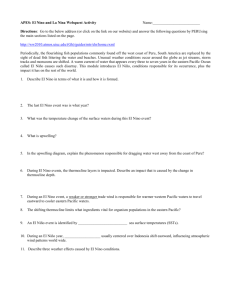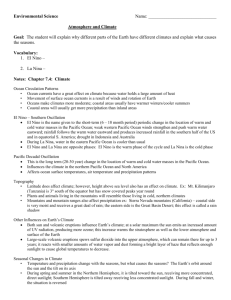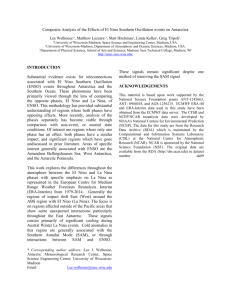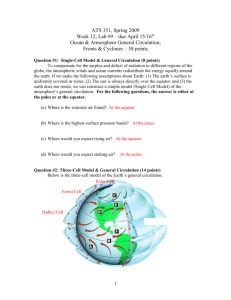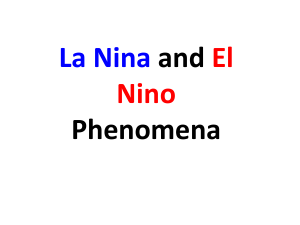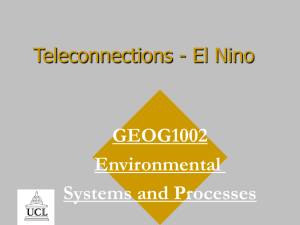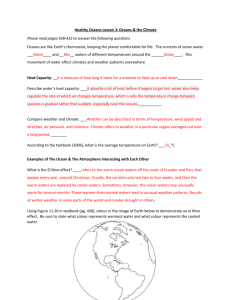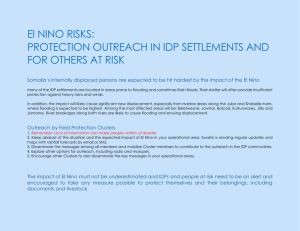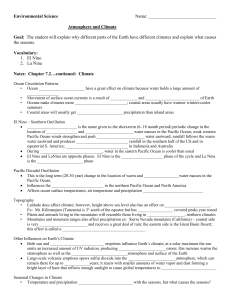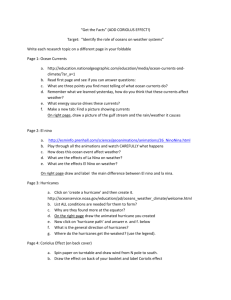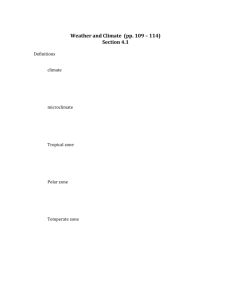El Nino and La Nina
advertisement
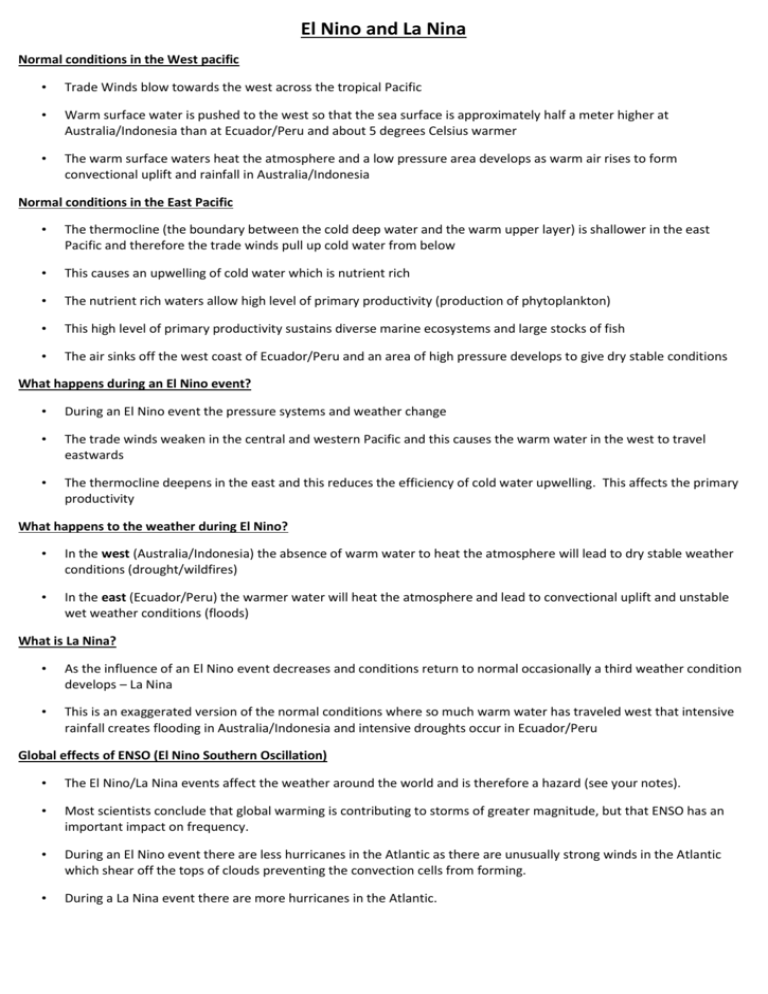
El Nino and La Nina Normal conditions in the West pacific • Trade Winds blow towards the west across the tropical Pacific • Warm surface water is pushed to the west so that the sea surface is approximately half a meter higher at Australia/Indonesia than at Ecuador/Peru and about 5 degrees Celsius warmer • The warm surface waters heat the atmosphere and a low pressure area develops as warm air rises to form convectional uplift and rainfall in Australia/Indonesia Normal conditions in the East Pacific • The thermocline (the boundary between the cold deep water and the warm upper layer) is shallower in the east Pacific and therefore the trade winds pull up cold water from below • This causes an upwelling of cold water which is nutrient rich • The nutrient rich waters allow high level of primary productivity (production of phytoplankton) • This high level of primary productivity sustains diverse marine ecosystems and large stocks of fish • The air sinks off the west coast of Ecuador/Peru and an area of high pressure develops to give dry stable conditions What happens during an El Nino event? • During an El Nino event the pressure systems and weather change • The trade winds weaken in the central and western Pacific and this causes the warm water in the west to travel eastwards • The thermocline deepens in the east and this reduces the efficiency of cold water upwelling. This affects the primary productivity What happens to the weather during El Nino? • In the west (Australia/Indonesia) the absence of warm water to heat the atmosphere will lead to dry stable weather conditions (drought/wildfires) • In the east (Ecuador/Peru) the warmer water will heat the atmosphere and lead to convectional uplift and unstable wet weather conditions (floods) What is La Nina? • As the influence of an El Nino event decreases and conditions return to normal occasionally a third weather condition develops – La Nina • This is an exaggerated version of the normal conditions where so much warm water has traveled west that intensive rainfall creates flooding in Australia/Indonesia and intensive droughts occur in Ecuador/Peru Global effects of ENSO (El Nino Southern Oscillation) • The El Nino/La Nina events affect the weather around the world and is therefore a hazard (see your notes). • Most scientists conclude that global warming is contributing to storms of greater magnitude, but that ENSO has an important impact on frequency. • During an El Nino event there are less hurricanes in the Atlantic as there are unusually strong winds in the Atlantic which shear off the tops of clouds preventing the convection cells from forming. • During a La Nina event there are more hurricanes in the Atlantic.
